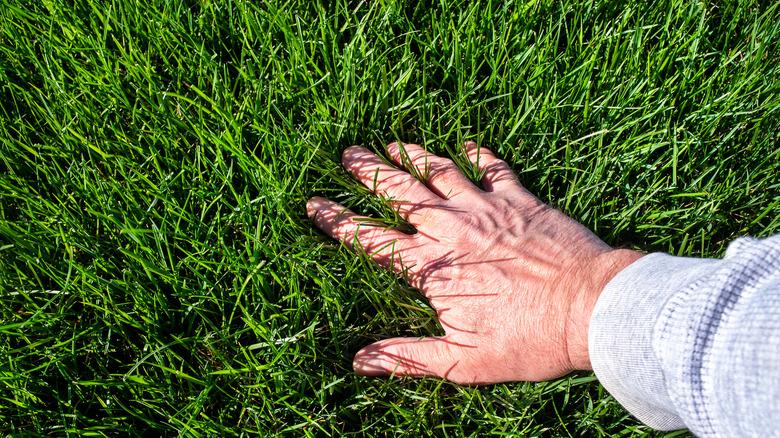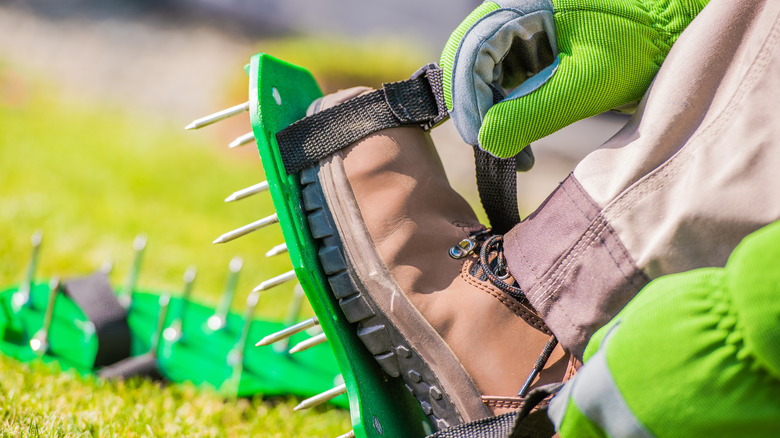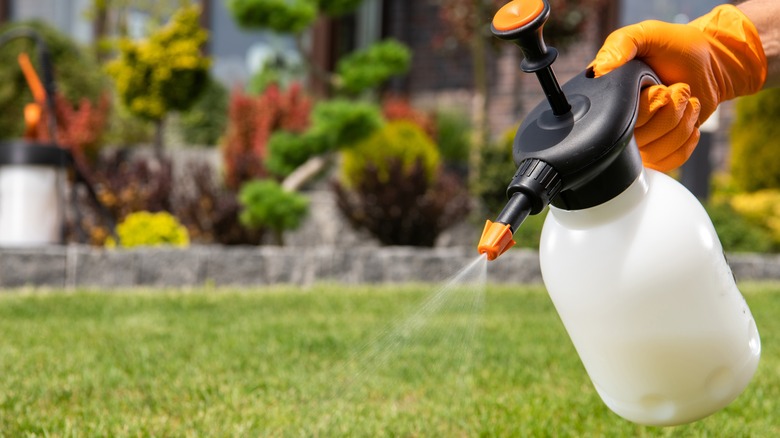If You See This Weed In Your Yard, Immediately Get Rid Of It
Finding lawn burweed sprouting up in your yard is a clear sign you need to spring into action. Early detection and a combination of methods to get rid of this common weed—including manual removal, proper lawn care, and selective herbicide use—are crucial. Known for its invasive nature, particularly in places like North Carolina, this weed requires prompt attention to keep it from taking over your outdoor areas. It appears mostly in wintertime and is described as a broadleaf annual that thrives in a variety of environments, making it a versatile foe. With its ability to spread rapidly through creeping stems that lie close to the ground, lawn burweed can quickly create a dense carpet that smothers other plants. Imagine a plant that hugs the ground, making the most of any space it can find to grow, with a determination that's hard to beat. It's quick to take root and spread.
Its seeding capability is nothing short of impressive; the plant is a prolific producer of tiny, sharp seeds that resemble parsley in appearance. These seeds, encased in spiky burs, come with a nasty surprise. They are designed to catch anything that comes close — be it your clothes, shoes, or gardening tools — allowing the weed to hitch a ride and infest new areas, furthering its invasive reach. The discomfort of stepping on these sharp seeds barefoot is also a common lament among gardeners and homeowners alike, turning what should be a pleasant walk across your lawn into a painful experience.
Mechanical and cultural means to combat burweed
To keep your yard free from the clutches of lawn burweed, you'll need to focus on cultivating a thick, healthy turf. Imagine your lawn as a battleground; the denser and more robust your grass, the less likely it is for burweed to gain a foothold. Essentially, a well-maintained lawn acts as a natural deterrent, leaving no space for this invasive weed to establish itself. The strategy here is clear: The healthier your lawn is, the less hospitable it becomes to burweed.
A crucial step towards achieving such a lawn is aeration. This process, akin to letting your lawn breathe, involves perforating the soil with small holes that allow air, water, and nutrients to penetrate directly into the grass's roots, promoting stronger and denser growth. Lawn aerators come in various forms, including spike aerators that poke holes in the ground and plug aerators that remove small plugs of soil, creating more space for air and water to penetrate the soil. To aerate your lawn effectively, ensure you cover the entire area, focusing on sections at a time to ensure thorough coverage.
When burweed does manage to sprout, it's time for direct action by removing the weeds by hand before they seed. This method requires diligence: Grasp each weed firmly and pull it out, roots included, to prevent it from spreading. Timing is critical with manual removal. Target the burweed early, ideally before it has a chance to seed, to disrupt its life cycle and prevent the emergence of new plants.
Herbicide application for burweed eradication
When your efforts with manual weeding and lawn care aren't keeping lawn burweed at bay, it's time to consider the herbicide route as a viable option. Entering the world of herbicides, you'll find your first ally in pre-emergent herbicides, such as isoxaben. These herbicides work by creating a barrier at the soil level that prevents weed seeds from germinating. For them to work their magic, timing is everything. You need to apply them before the burweed seeds have a chance to wake up and grow. Typically, this means laying down the herbicide in October, when the cooler nights — think 55 to 60 degrees Fahrenheit — start to roll in. This cool spell is like a starting gun for burweed seeds, telling them it's time to germinate. Applying a pre-emergent herbicide during this window can effectively stop these seeds in their tracks, preventing them from ever becoming a problem.
However, if burweed has already taken hold in your lawn, you'll need to switch gears to post-emergent herbicides, such as dicamba or atrazine. These types work best on burweed that are still in the active growth phase, ideally before the plant has had a chance to produce its troublesome burs. The prime time for using post-emergent herbicides is from December to early February. Applying them during this period ensures that the burweed is vulnerable and that the herbicide can be most effective before the burs have hardened. The weed then becomes more of a challenge to eliminate.


